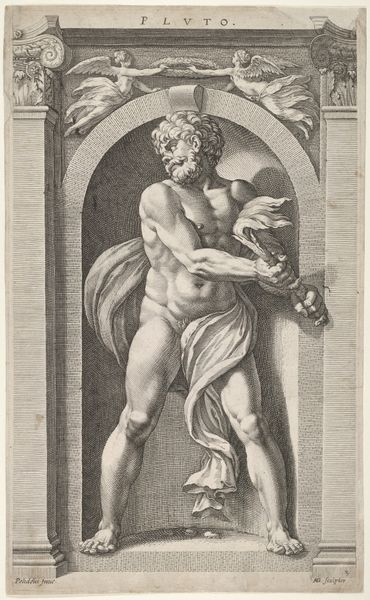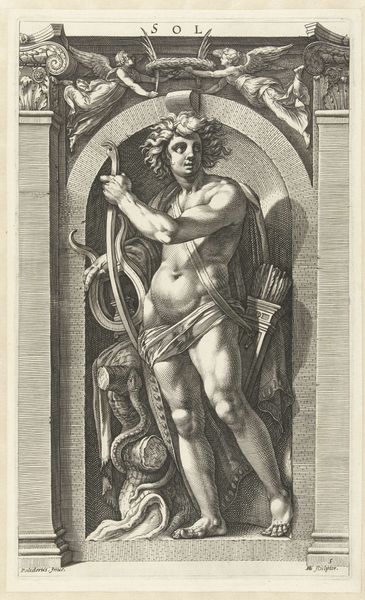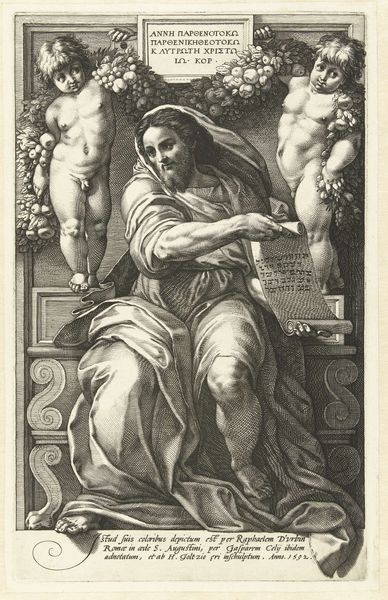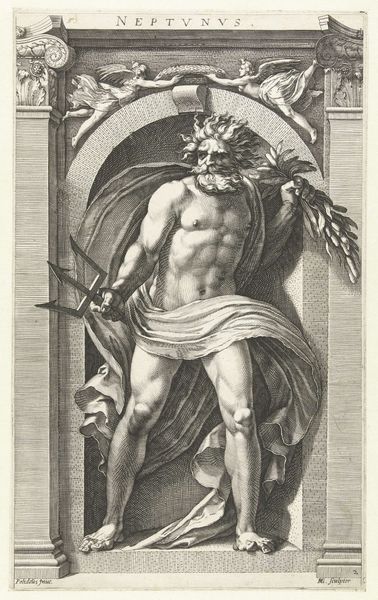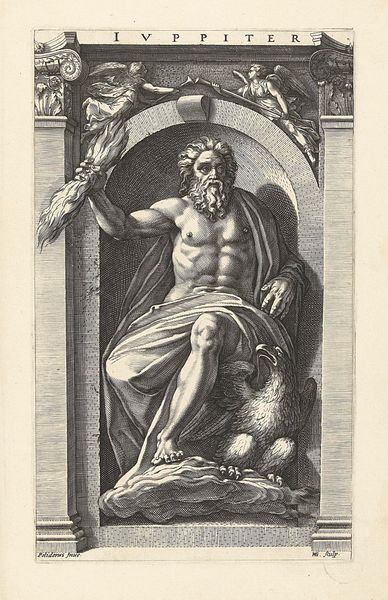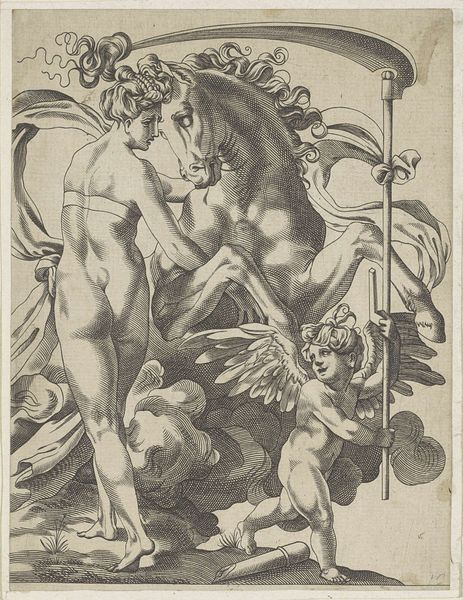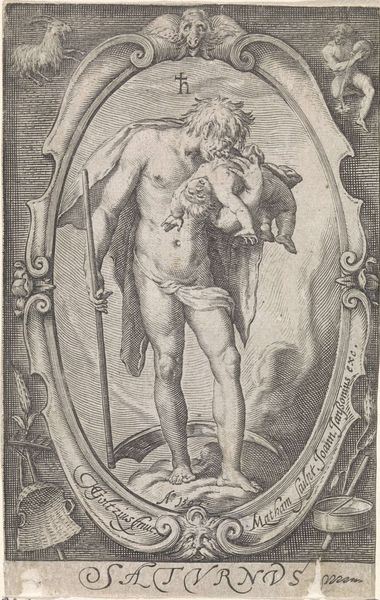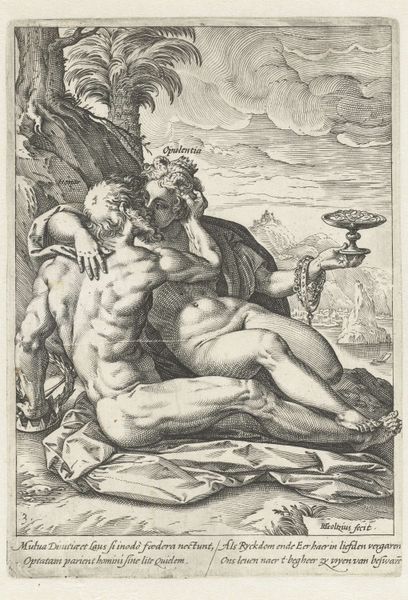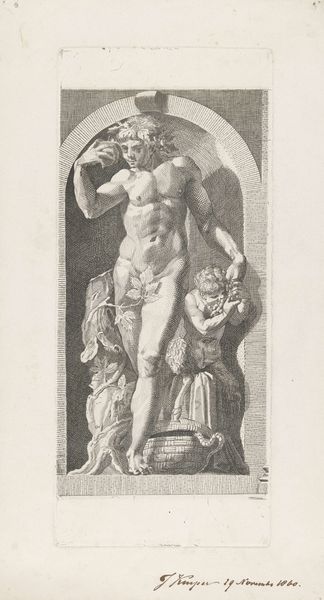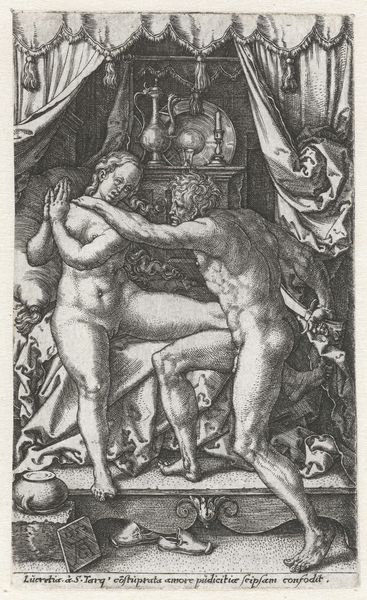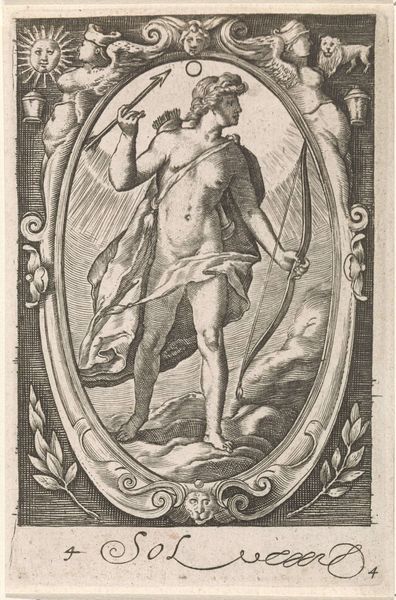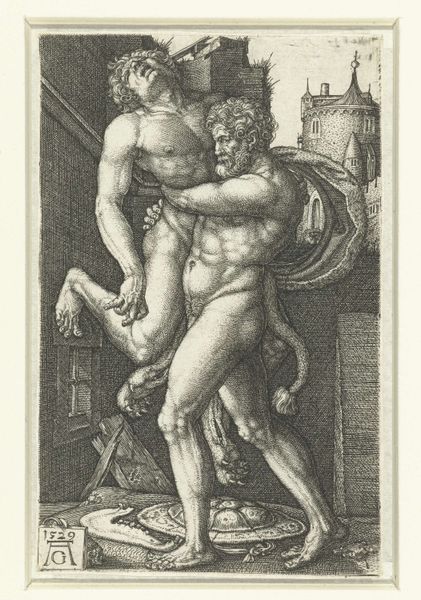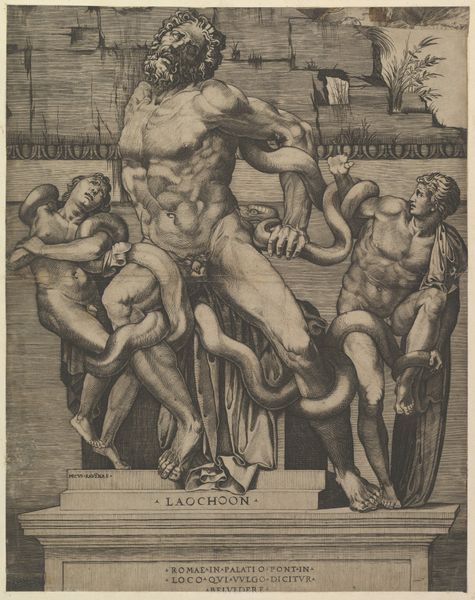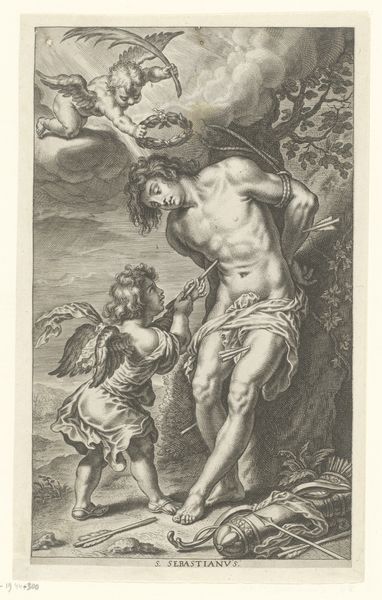
print, engraving
#
portrait
#
baroque
# print
#
old engraving style
#
figuration
#
portrait drawing
#
history-painting
#
nude
#
engraving
Dimensions: height 354 mm, width 215 mm
Copyright: Rijks Museum: Open Domain
Hendrick Goltzius rendered this engraving of Bacchus. The god of wine and ecstasy stands crowned with grape leaves, a visual echo of ancient Dionysian revelry. Note the motif of the grape. Bacchus holds aloft a cluster, while a cherubic figure clutches more, hinting at abundance and the intoxicating power of wine. This symbol is not isolated. Recall its presence in Roman mosaics, where grapes often bordered scenes of feasts and celebrations. The grape leaf, modestly covering Bacchus's loins, offers another layer. A symbol of fertility and pleasure but also of concealment. This duality echoes the complex nature of Bacchus himself – a deity of liberation and chaos, joy and inebriation. It's a potent emblem, engaging our collective memory of ritual and abandon. The image evokes a primal, subconscious understanding of pleasure and its potential for excess. This is the enduring power of symbols, resurfacing through history.
Comments
No comments
Be the first to comment and join the conversation on the ultimate creative platform.
